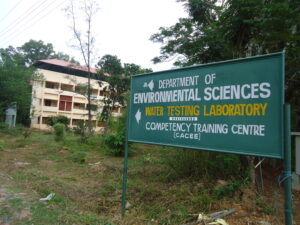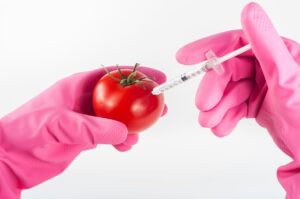- What is microbiology?
- The study of microorganisms.
- What are microorganisms?
- Organisms that are too small to be seen with the naked eye.
- Who is considered the father of microbiology?
- Antonie van Leeuwenhoek.
- What is a bacterium?
- A type of single-celled microorganism that has a prokaryotic cell structure.
- What is a virus?
- A non-living infectious agent composed of genetic material (DNA or RNA) enclosed in a protein coat.
- What is a fungus?
- A type of microorganism that includes yeasts, molds, and mushrooms.
- What is a protist?
- A diverse group of eukaryotic microorganisms that are not fungi, plants, or animals.
- What is a parasite?
- An organism that lives on or in a host organism and derives nutrients from it.
- What is a pathogen?
- An organism that causes disease.
- What is aseptic technique?
- Procedures used to prevent contamination of cultures and samples by unwanted microorganisms.
- What is sterilization?
- The process of killing or removing all microorganisms and their spores from an object or environment.
- What is pasteurization?
- The process of heating food or liquids to a specific temperature for a certain period to kill pathogens and extend shelf life.
- What is a culture medium?
- A solid or liquid nutrient solution used to grow and maintain microorganisms in the laboratory.
- What is a colony?
- A visible mass of microorganisms that originated from a single cell.
- What is asepsis?
- The absence of pathogenic microorganisms.
- What is a biofilm?
- A community of microorganisms that are attached to a surface and enclosed in a matrix of extracellular polymeric substances.
- What is a prokaryote?
- A single-celled organism that lacks a nucleus and membrane-bound organelles.
- What is a eukaryote?
- An organism with cells that contain a nucleus and membrane-bound organelles.
- What is the Gram stain used for?
- To classify bacteria into Gram-positive and Gram-negative based on differences in cell wall structure.
- What is antibiotic resistance?
- The ability of bacteria and other microorganisms to resist the effects of antibiotics.
- What is the microbiome?
- The collection of microorganisms that inhabit a particular environment, such as the human body.
- What is bioremediation?
- The use of microorganisms to break down or neutralize pollutants in the environment.
- What is fermentation?
- The metabolic process by which microorganisms convert sugars into acids, gases, or alcohol in the absence of oxygen.
- What is a bacteriophage?
- A virus that infects and replicates within bacteria.
- What is a prion?
- An infectious agent composed of protein that causes neurodegenerative diseases.
- What is a viroid?
- A plant pathogen composed of a single-stranded RNA molecule that causes disease.
- What is a toxin?
- A poisonous substance produced by microorganisms.
- What is a mycosis?
- A disease caused by a fungus.
- What is a protozoan?
- A single-celled eukaryotic organism, such as amoeba or malaria parasite.
- What is zoonosis?
- An infectious disease that can be transmitted from animals to humans.
- What is antigen?
- A molecule that triggers an immune response by binding to antibodies or T-cell receptors.
- What is the Koch’s postulates?
- A set of criteria used to establish the causative relationship between a microorganism and a disease.
- What is quorum sensing?
- The ability of bacteria to communicate and coordinate gene expression based on cell density.
- What is phagocytosis?
- The process by which cells engulf and digest solid particles, such as bacteria or cellular debris.
- What is a plasmid?
- A small, circular DNA molecule found in bacteria that can replicate independently of the chromosomal DNA.
- What is recombinant DNA technology?
- The process of combining DNA molecules from different sources to create genetically modified organisms or produce specific proteins.
- What is a vector in molecular biology?
- A DNA molecule, such as a plasmid or virus, used to carry foreign genetic material into a host cell.
- What is PCR (polymerase chain reaction)?
- A laboratory technique used to amplify and make copies of a specific DNA sequence.
- What is gene expression?
- The process by which information from a gene is used to synthesize a functional gene product, such as protein or RNA.
- What is CRISPR-Cas9?
- A revolutionary gene-editing tool that allows precise modification of DNA sequences.
- What is an endospore?
- A dormant, tough, and non-reproductive structure formed by certain bacteria as a response to adverse environmental conditions.
- What is transformation in bacteria?
- The process by which bacteria take up and incorporate foreign DNA from the environment into their genome.
- What is conjugation in bacteria?
- The process by which bacteria transfer genetic material through direct cell-to-cell contact using a conjugation pilus.
- What is transduction in bacteria?
- The process by which bacterial DNA is transferred from one bacterium to another by a bacteriophage.
- What is the role of nitrogen-fixing bacteria?
- To convert atmospheric nitrogen into ammonia, making it available to plants in a usable form.
- What are extremophiles?
- Microorganisms that thrive in extreme environmental conditions, such as high temperatures, acidity, or salinity.
- What is symbiosis?
- A close and long-term interaction between two different biological species.
- What is a commensal microorganism?
- A microorganism that benefits from its association with another organism without causing harm.
- What is mutualism?
- A symbiotic relationship in which both organisms benefit from the association.
- What is parasitism?
- A symbiotic relationship in which one organism (parasite) benefits at the expense of another organism (host).



